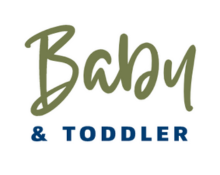Understanding the milestones of fetal growth and development can help expectant parents feel more connected to their baby and better prepared for the changes ahead. Each week of pregnancy brings new and exciting developments as your baby grows from a single cell into a fully developed infant. This lesson outlines key milestones in fetal development from conception through birth.
First Trimester: Weeks 1-12
Weeks 1-4: Conception and Early Development
- Conception: The sperm fertilizes the egg, forming a zygote. The zygote travels down the fallopian tube and implants itself into the uterine lining.
- Blastocyst Stage: The zygote divides and becomes a blastocyst, which consists of about 100 cells and will eventually form the embryo and placenta.
- Implantation: Around day 6-10, the blastocyst implants into the uterine wall, beginning the process of embryonic development.
Weeks 5-8: Organ Formation Begins
- Heartbeat: The baby’s heart starts to beat around week 6.
- Organ Development: Major organs like the brain, spinal cord, heart, and digestive system begin to form.
- Limb Buds: Small buds that will become arms and legs appear.
- Facial Features: Early facial features, including eyes and ears, start to form.
Weeks 9-12: Fetal Period Begins
- Fetus: The embryo is now referred to as a fetus.
- Movement: The fetus begins to make small movements, although these are not yet felt by the mother.
- Genitalia: The external genitalia start to develop, but it’s too early to determine the sex.
- Teeth Buds: Tooth buds begin to form under the gums.
Second Trimester: Weeks 13-26
Weeks 13-16: Rapid Growth
- Skeleton: The bones continue to harden, and the muscles develop.
- Skin: The skin is still thin and transparent, but it’s developing.
- Sucking and Swallowing: The fetus can make sucking motions and swallow amniotic fluid.
- Ears and Eyes: The ears move to their final position on the sides of the head, and the eyes move closer together.
Weeks 17-20: Sensory Development
- Quickening: The mother may start to feel the baby’s movements, known as quickening.
- Vernix Caseosa: A protective waxy coating called vernix caseosa covers the skin.
- Lanugo: Fine, soft hair called lanugo covers the fetus’s body to keep it warm.
- Hearing: The baby’s hearing develops, and they can start to hear sounds and voices.
Weeks 21-24: Continued Growth
- Taste Buds: Taste buds are developing, and the baby can taste the amniotic fluid.
- Lung Development: The lungs produce surfactant, a substance that helps the air sacs inflate after birth.
- Sleep Patterns: The fetus begins to develop regular sleep and wake cycles.
Weeks 25-26: Preparing for Life Outside the Womb
- Weight Gain: The baby starts to gain more weight, and fat begins to accumulate under the skin.
- Eyes: The eyes can open and close, and the retina becomes more developed.
- Brain Growth: The brain is rapidly growing, increasing the baby’s chances of survival if born prematurely.
Third Trimester: Weeks 27-40
Weeks 27-30: Continued Maturation
- Muscle Tone: The baby’s muscle tone improves, and movements become more coordinated.
- Breathing Movements: The baby practices breathing movements, even though they won’t breathe air until birth.
- Nervous System: The nervous system continues to mature, improving the baby’s reflexes.
Weeks 31-34: Final Preparations
- Position: The baby moves into a head-down position, preparing for birth.
- Immune System: The baby’s immune system develops, and they receive antibodies from the mother.
- Fat Layers: More fat layers are added, which helps regulate body temperature after birth.
Weeks 35-37: Nearing Full-Term
- Lung Development: The lungs are almost fully developed, ready for the first breath of air.
- Brain Development: The brain continues to grow, developing important functions for life outside the womb.
- Coordination: Movements become more coordinated, and the baby can grasp objects.
Weeks 38-40: Full-Term and Birth
- Final Growth: The baby continues to gain weight and grow in length.
- Birth Readiness: All major organs are fully developed and ready for life outside the womb.
- Birth: Around 40 weeks, the baby is typically born, although full-term is considered any time between 37 and 42 weeks.
Each stage of fetal development is a remarkable process filled with rapid growth and significant milestones. Understanding these stages helps expectant parents feel more connected to their baby and more prepared for the changes that occur throughout pregnancy. As you progress through each trimester, staying informed about your baby’s development can enhance your experience and provide a deeper sense of wonder and anticipation as you await your baby’s arrival.
